Many words have been spoken and written about the comparison between Agile and Agile 2. In my opinion, the most insightful analysis comes from Cliff Berg’s article, which precisely delves into this subject. Berg points out that Agile 2 recognizes the success of Agile in shifting its focus from big plans to small teams. However, he critiques Agile 2 for dismissing leadership, structure, and individual differences while lacking emphasis on data and information. Agile 2 positions itself as a pivot from Agile, drawing insights from two decades of experiences, both successes and shortcomings. Its goal is to contribute positively to Agile thinking and tackle the challenges of Agile transformation, ultimately aiming for organizations to achieve genuine agility.
For a quick overview, here are the key points in a nutshell:
Agile
- Extreme Thinking: Agile is criticized for having an unidirectional push towards more collaboration and face-to-face interaction, with less focus on individual deep thinking and getting work done.
- Scrum Dominance: The Agile community is often perceived as a slave to Scrum, with organizations believing they have to start with Scrum, influenced by Scrum training and certification vendors’ marketing.
- Lack of Judgment: Agile is portrayed as lacking judgment, being a set of ideas rather than a methodology, and sometimes interpreted as dogmatic and extreme.
- Team-Centric Culture: Agile has developed a culture overly focused on teams, neglecting the importance of individuals in the process.
- Limited Leadership Styles: The emphasis on self-organizing teams may overlook the need for various forms of leadership, leaving gaps in mentorship, coaching, and professional growth for individuals.
- Data Oversight: Agile neglects the strategic importance of data, with teams often failing to manage and catalog data for later analysis.
Agile 2
- Balanced Thinking: Agile 2 brings back balance and judgment, advocating for a more nuanced approach rather than extreme thinking. It aims to address the drawbacks of rigidity and extremes present in Agile.
- Diverse Leadership: Agile 2 stresses the need for multiple forms of leadership, recognizing the importance of individual attention, growth, mentorship, and opportunities for professional development.
- Individual Focus: Agile 2 emphasizes that while teams matter, individuals also matter, bringing back the focus on individual contributions and recognition.
- Data Management: Agile 2 acknowledges the strategic importance of data, advocating for its proper management and cataloging to derive insights. It addresses the oversight of data in Agile practices.
- Understanding Data Model: Agile 2 suggests that development teams need to understand an organization’s data model before coding, ensuring a comprehensive approach to data in the development process.
- Importance of Test Data: Agile 2 recognizes the significance of test data, highlighting the challenges teams face in creating realistic test data and the role of business stakeholders in assembling it.
To put it in a more schematic way, an apple to apple comparison table between Agile and Agile 2 based on the essential pieces highlighted in Cliff Berg’s article. (Just to make sure you have quick access to the Agile 2 principles, you can find them here.)
| Aspect | Agile | Agile 2 |
|---|---|---|
| Thinking Approach | Extreme thinking, unidirectional push | Balanced thinking, restoration of judgment |
| Relationship with Scrum | Often perceived as a slave to Scrum | Acknowledges the dominance of Scrum, but calls for a nuanced approach |
| Methodology vs. Philosophy | Regarded as a set of ideas, lacking judgment | Recognized as a philosophy, emphasizes judgment and thoughtfulness |
| Focus on Individuals | Team-centric culture | Emphasis on both teams and individuals |
| Leadership Styles | Emphasis on self-organizing teams, limited leadership styles | Stresses the need for diverse leadership, recognizing individual needs |
| Data Oversight | Neglects the strategic importance of data | Acknowledges the strategic value of data, addressing its proper management |
| Understanding Data Model | Often expects teams to start coding without understanding the data model | Advocates for teams to comprehend an organization’s data model before coding |
| Test Data Importance | Often expects developers to create test data without realistic sets | Recognizes the importance of realistic test data, emphasizes business stakeholder responsibility |
We decided to look deeper into Agile vs Agile 2 values as they are presented in Agile Manifesto and Agile 2 value outline, and see how the original values got transformed and which ones correspond with the new ones compared “apple to apple”.
Agile vs Agile
| Agile 1 | Agile 2 |
| Individuals and interactions over processes and tools | Individuals and teams |
| Individuals and interactions over processes and tools | Thoughtfulness and prescription |
| Working software over comprehensive documentation | Outcomes and outputs |
| Customer collaboration over contract negotiation | Outcomes and outputs |
| Responding to change over following a plan | Outcomes and outputs |
| Business understanding and technical understanding | |
| Individuals and interactions over processes and tools | Individual empowerment and good leadership |
| Individuals and interactions over processes and tools Responding to change over following a plan | Adaptability and planning |
What changed
Now, let’s see how things actually changed and what’s the takeaway of each Agile2 value compared to original Agile:
Individuals and interactions over processes and tools (Agile) vs. Individuals and teams (Agile 2):
Agile Perspective: Emphasizes the importance of individuals and their interactions within the team versus following a plan without consideration of the team dynamics.
Agile 2 Perspective: Extends the focus not only to individuals but also acknowledges the significance of teams working collaboratively, where team interests and individual interests are in balance.
Takeaway: Agile 2 values expand on the original Agile value about individuals and teams, emphasizing the holistic approach to teamwork, contributing to a more comprehensive understanding of team dynamics and collective goals. This is a significant improvement compared to Agile.
Individuals and interactions over processes and tools (Agile) vs. Thoughtfulness and prescription (Agile 2):
Agile 2 Perspective: Extends the focus on the importance of understanding the situation that requires a solution, rather than blindly following an established plan. This is more about the “processes and tools” part of the Agile value
Takeaway: Very needed and helpful extension. Unfortunately, the way it’s elaborated in Agile 2 (“…Considering context, and taking action only after one has attempted to understand the situation. Prescription means following predefined steps, as in a framework, unchanged and not tailored to the situation…”) leaves a lot of room for interpretation, which is never good when it comes to something that needs to be crystal clear so it’s perceived the same way by everyone. This was an Agile fault, and as we see, Agile creators still carried over the unclarity to Agile 2. We elaborate on this and other issues of Agile 2 in the article Reflecting on The Values and Principles of Agile 2.
Individuals and interactions over processes and tools (Agile) vs. Individual empowerment and good leadership (Agile 2):
Agile 2 Perspective: Recognizes the significance of individual empowerment and the need for effective leadership within the Agile context.
Takeaway: Agile 2’s recognition of effective leadership highlights something that was definitely missed in Agile, where everyone assumed that since the teams were supposed to be self-organizing, leadership in the way we knew it was obsolete. The reality proved it to be a faulty notion. Leadership in its managerial way has been obsolete for years. True servant leadership will never be obsolete. Regardless of how high the team members’ self-awareness is, the overall human tendency is to do as little as possible. Leaders will always be needed as they are the fire and heart of any movement, be it a software implementation or leading a country to global success. Putting individuals and their interactions is not enough for achieving success. Leading them softly and carefully is. Unfortunately, Agile 2 does not mention that leadership must be servant.
Individuals and interactions over processes and tools and Responding to change over following a plan (Agile) vs. Adaptability and planning and Outcomes and outputs (Agile 2):
Agile Perspective: Favors adaptability and responsiveness to change instead of rigidly following a predefined plan or established processes.
Agile 2 Perspective: Introduces a value highlighting the balance between adaptability and planning, emphasizing the need for a thoughtful approach to both aspects where plans are needed, but we should be open to their need to change and be prepared to do it.
Takeaway: Another reference to “Outcomes over outputs,” where outputs without considering outcomes
may involve successfully completing tasks and following a plan but failing to deliver a product that solves problems.
When it comes to adaptability and planning, it’s essentially the essence of the agility of the methodology. Agile 2’s shift from seemingly assigning little importance to processes and tools to emphasizing the balance between adaptability and planning underscores the significance of a thoughtful approach and balance in everything. This perspective may lead to better decision-making, combining the benefits of staying open to pivoting when needed, even if it involves changing processes and tools. Any methodology is just a framework; it must serve, not dictate.
Working software over comprehensive documentation (Agile) vs. Outcomes and outputs (Agile 2):
Agile Perspective: Prioritizes delivering functional software over the creation of extensive documentation.
Agile 2 Perspective: Shifts the focus to broader outcomes and outputs, recognizing the overall impact beyond just the software.
Takeaway: Agile 2’s shift to outcomes and outputs broadens the focus beyond software, emphasizing the overall impact of deliverables where both outcomes and outputs matter; but outcomes are what matter most. This change encourages a more holistic evaluation of product success, emphasizing the focus on the result of work product (working software) rather than the result of work (completed task). This supports the narrative about keeping a sharp vision of the product team is creating, ensuring that it is successful, not just the completion of plans and agendas.
Customer collaboration over contract negotiation (Agile) vs. Outcomes and outputs (Agile 2):
Agile Perspective: Advocates for collaboration with customers even when there are prior agreements around functionalities.
Agile 2 Perspective: Aligns with the emphasis on outcomes and outputs, suggesting a more results-oriented approach insisting on the importance of the outcome.
Takeaway: In a way, the original Agile value speaks on the importance of the outcomes, which is determined by how well we understand the customer needs. It’s interesting that three of the four original agile manifesto values are represented by just one Agile 2 value that is pretty vague in its description. Therefore, certain details like customer collaboration or the next value…
Business understanding and technical understanding (Agile 2):
Agile 2 Perspective: Introduces a new value emphasizing the importance of enough understanding of both business and technical aspects by both business and technical stakeholders, bridging the gap between the two domains.
Takeaway: Agile 2’s introduction of the necessity of technology personnel to have an interest in business issues, and business personnel to have an interest in technology issues, is very good news. A holistic understanding of technology and business is what was definitely missing in the original Agile.
.……….……….
The comparison between Agile and Agile 2 underscores the evolutionary progression in agile methodologies. Agile 2 addresses key critiques of Agile, introducing nuanced perspectives that emphasize the importance of balanced thinking, diverse leadership, individual recognition, and strategic data management. The shift towards outcomes over outputs and the acknowledgment of the holistic understanding of technology and business represent significant advancements. While Agile laid the groundwork for collaborative and adaptive practices, Agile 2 aims to refine and augment these principles, fostering a more comprehensive and balanced approach to achieve true organizational agility.
However while Agile 2 introduces crucial refinements and enhancements to address the shortcomings of Agile, it also prompts thoughtful consideration of potential challenges and areas for further evolution. As organizations grapple with the transition to Agile 2, it sets the stage for future iterations, perhaps an Agile 3, to emerge as a truly revolutionary methodology. The journey towards organizational agility is ongoing, and the anticipation of continued innovation remains high, as the agile community seeks a methodology that seamlessly integrates adaptability, leadership, and individual empowerment to propel organizations into an era of unprecedented success and efficiency.




No responses yet